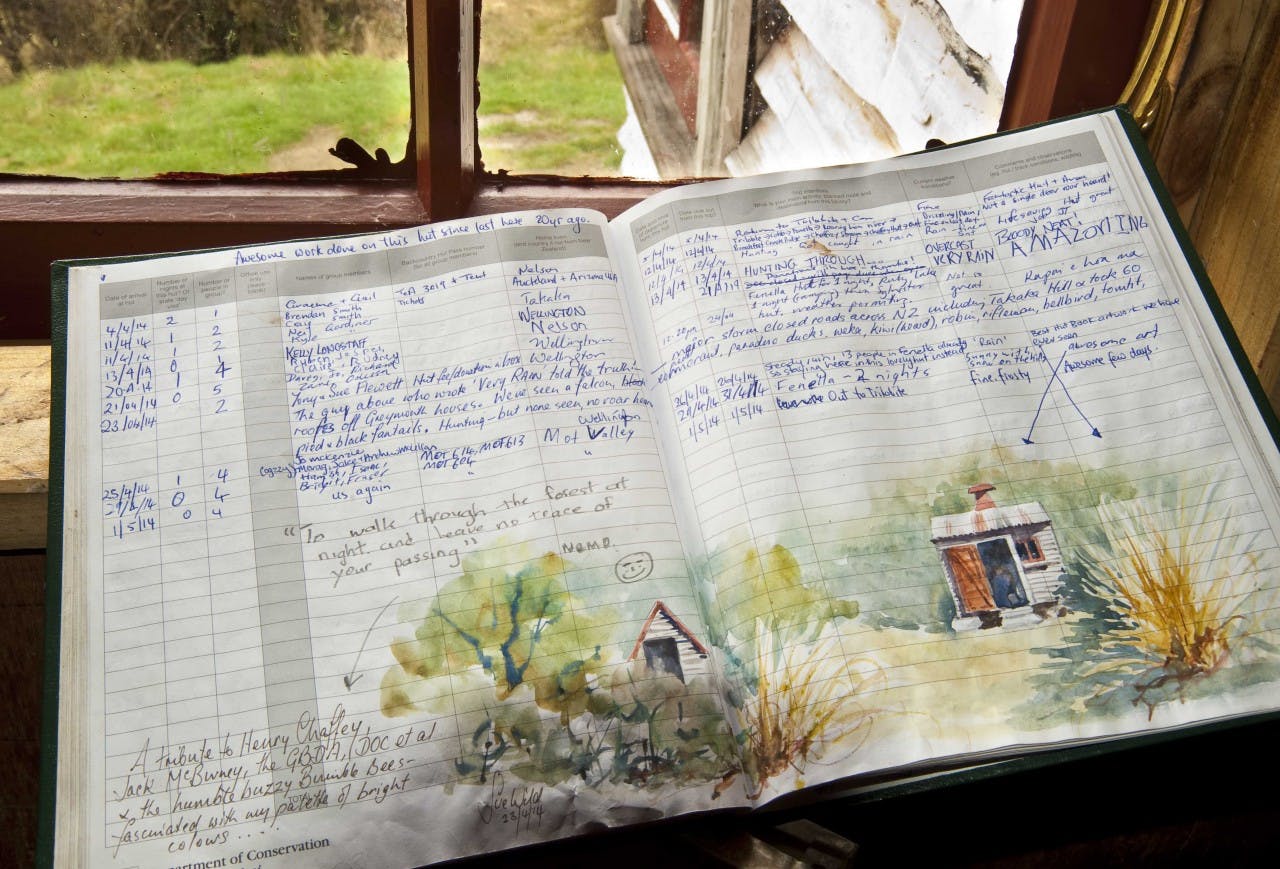Hut books are not just informative – they can be downright fascinating and hilarious
The humble hut book is often the first thing a tramper looks through at the end of a day’s walk.
They serve several important purposes. First and foremost, of course, they provide a record of trampers’ intentions, which may prove invaluable in the event something goes wrong. Search and Rescue teams rely on hut book entries to help narrow their search for a missing person.
Secondly, the hut book offers information for others using the hut. Are there obstacles or dangers on the track ahead, recorded by trampers coming in the opposite direction? Perhaps there might be good advice on an off-track route you hadn’t considered.
Thirdly, it provides a valuable record of those using the hut for DOC staff or other groups that manage the hut. How much use does the hut get, and by whom? Are the visitors mainly hunters, trampers or climbers? How long do they stay? Have users recorded problems that need fixing: a leaky roof, a rodent invasion, or a loose windowpane?
Lastly, the hut book is a place where you might learn something about the history of the hut, chuckle over a funny anecdote, or enjoy an inspirational quote from someone.
During the 1980s, I remember several log books in Southern Alps’ huts that had entries written in stunning black Gothic script – penned by a pair doing a long traverse. The occasional visitor might even use the hut book as a canvas for their artwork. In the past decade or so, many hut books in the Nelson and Marlborough region have been graced by the artwork of tramper Sonia Roxburgh. Another artist, Sue Wild, made a drawing in the Chaffey Hut book shown in the photograph accompanying this article.
Naturally, hut books are replaced when full, and the more popular the hut, the quicker the turnover. Where do they all go? Many have been lost or destroyed, but DOC often keeps retired hut books, and some of the most venerable are found in institutions like museums, libraries or club archives.
The three huts featured here have particularly interesting hut books.
Shutes Hut, Ruahine Forest Park
Shutes Hut, built by Alex Shute in 1920, is a rare example of a North Island stone hut. Shute was a rabbiter who worked for many years in the area and was something of a hermit. In 1956, several years after Shute had died, hunter Lester Masters installed a hut book and case at Shutes Hut. That original one became full in the 1980s, when another hunter, Paul Sanderson, donated the lovely hardback tome still in use today. Yet another hunter, the late great Tony Gates, photocopied the original 1956-1981 hut book, and left a copy at Shutes. So trampers who now visit can read over both volumes, which together span nearly 70 years of history. Wonderful.
Chaffey Hut, Cobb Valley, Kahurangi National Park, Golden Bay
The historic Chaffey Hut, first built by Forest Service ranger Jack McBurney in the early 1950s, recently got a makeover by members of the Golden Bay branch of the New Zealand Deerstalkers’ Association, aided by DOC’s master hut restorer John Taylor. They did an exceedingly faithful job of restoring the hut to its original condition, with minor improvements, and it’s no wonder the current hut book brims with praise for their efforts.
Sir Robert Hut, Mungo Valley, West Coast
Sir Robert Hut is so seldom visited that the hut book has rarely been replaced. Between 1983 and 2007, for example, just 61 people had visited the hut, averaging only 2-3 per year. In the years 1994 and 1995, no one visited at all! That’s probably because reaching the hut is no easy task, and requires at least 3-4 days of tough tramping through the backblocks of Hokitika. Any hut book that spans this number of years always has stories of epics, savage weather and tramping that tested the party to its limits. The Sir Robert Hut book is full of them.








